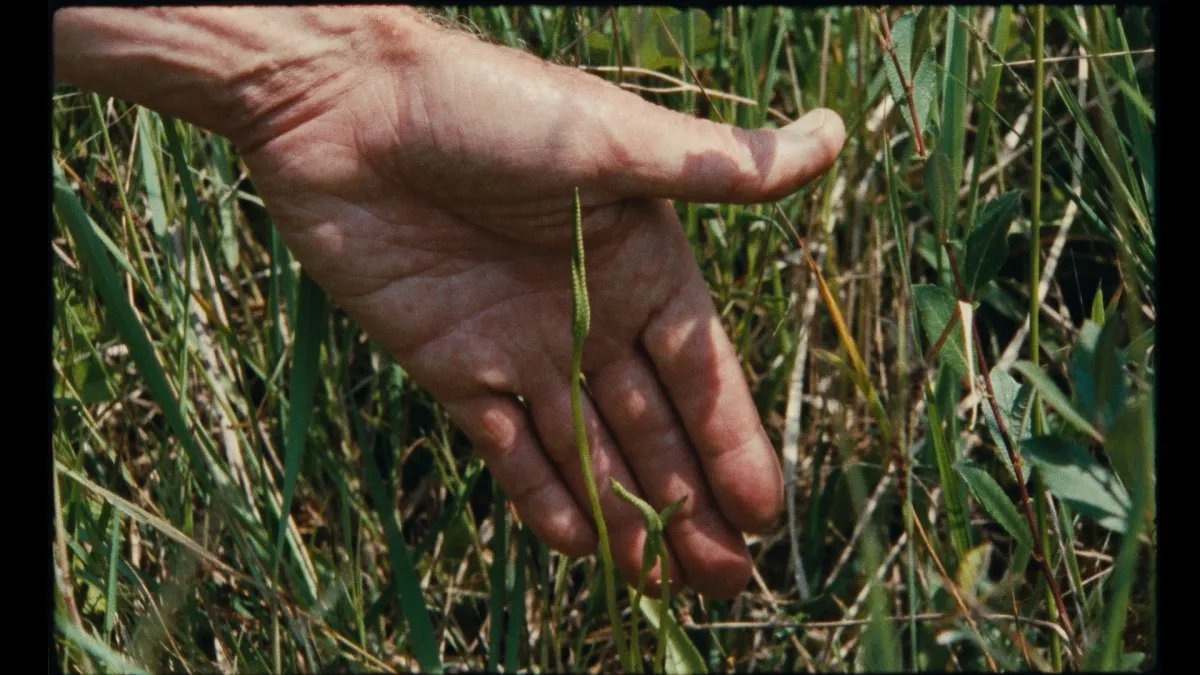

7 Walks With Mark Brown. Courtesy of NYFF
The New York Film Festival (NYFF), now in its 62nd edition, is one of the biggest film festivals in the United States and, along with TIFF, the most important second-run festival in North America. In practice, this means it holds particular influence over which films carry on to the U.S. from the major European premiere festivals in Berlin, Cannes, Locarno, and Venice. Sometimes this means highlighting certain cinephile favorites, such as Hong Sang-soo or David Cronenberg, or prizewinning films like Mati Diop’s Dahomey and Pedro Almodovar’s The Room Next Door, winners of the top prize at Berlin and Venice, respectively.
Other times, NYFF selections can set the tone for how certain films are discovered and discussed in the States. Eephus, Carson Lund’s directorial debut, had its premiere in the smaller sidebar competition Director’s Fortnight at Cannes earlier this year, but was elevated here in the festival’s Main Slate in its largest venue, Alice Tully Hall, alongside gala screenings and awards bait. In a few cases, the festival launches world premieres. This was the case, for instance, for the first part of Julia Loktev’s documentary My Undesirable Friends, about the crackdown on Russian dissidents in the months leading up to the invasion of Ukraine (discussed elsewhere in Documentary online). Such was also the case for the latest film by the maverick underground filmmaker Jem Cohen, Little, Big, and Far, premiering in the Currents section, the home for smaller, more experimental work within the festival.
This year’s edition found itself in the intersection of a number of conflicts surrounding the ongoing Israeli bombing of Gaza. In the days leading up to the festival, a “counter film festival” was announced, programming canonical protest films such as the classic Newsreel documentary The Case Against Lincoln Center (1968) and shorts by Palestinian filmmakers like Basma al-Sharif and Larissa Sansour. An open letter signed by many participants in NYFF and published on the eve of the festival’s opening night similarly called on the festival to end its relationship with Bloomberg Philanthropies and other sponsors abetting the ethnic cleansing of Palestinians by Israel. Even without these protests, the festival itself could not avoid disruptions by politics. On the day of the press screening for No Other Land, the father of Palestinian co-director Basel Adra was kidnapped by IDF soldiers in the West Bank. As Israel expanded its attacks both in the West Bank and Lebanon, both Adra and Israeli co-director Yuval Abraham were forced to cancel their planned talk and return home to protect their families. These events serve as a reminder, despite the protestation of some donors, that no one can truly shut politics out of the festival.
As it happens, protest was itself the subject of many of films in the festival—we may add to the aforementioned titles Brett Story and Stephen Maing’s Union, Petra Costa’s Apocalypse in the Tropics, Neo Sora’s Happyend, and Mohammad Rasoulof’s The Seed of the Sacred Fig. At first glance, the latter film may look out of place mentioned here in Documentary. Though he has directed documentaries, Rasoulof is best known for his social dramas. His first feature to gain attention in the West, The White Meadows (2009), extended the poetic lyricism of the heyday of Iranian cinema of the 1990s to the end of the 2000s. Since then, his films have increasingly taken on the character of allegorical blunt force objects, lauded as pieces of social criticism but too vacuous to hold interest for long, even as they rack up accolades. (Rasoulof’s previous film, There Is No Evil, received the top prize at the 2020 Berlinale.)
At its core, The Seed of the Sacred Fig shares with Rasoulof’s recent work the basic metaphorical veneer: a father, promoted to a top position within the court system of Tehran, finds himself increasingly at odds with his wife and two daughters. This tension escalates after his state-issued handgun goes missing—a loss that comes with a penalty of three year’s jail time if discovered. The father begins to employ the same variety of interrogation techniques used by the state against his family, bringing the film’s moral parable to a close. I have nothing to say about the film’s implausible second half, which, like many of Rasoulof’s recent films, fails to land dramatically. Of greater interest is the detour in the film’s first hour, during which the three women debate the real-life protests following the death of Masha Amini in police custody in September 2022, which unfold concurrently with the film’s main narrative. What has drawn the most attention in this portion of the film is the interpolation of actual footage of the protests into the fictional sequences directed by Rasoulof. Perhaps predictably, this aspect of the film has proved to be for many critics the most commendable part, and for this reason largely escaped serious scrutiny.
What’s useful about this section of the film is that it dramatizes the role the circulation of these images of state violence has come to play in modern life, drawing parallels not only to the protests in Iran but equally to any number of comparable acts of state violence against civilians (e.g., the Russian invasion of Mariupol, the George Floyd protests in the United States, the Israeli invasion of Gaza). In this sense, it stumbles upon a subject even more relevant than the film’s main narrative through-line. For the same reason, this is equally the part deserving of the closest examination of how the film classifies various kinds of images. For his part, Rasoulof refuses to simulate any kind of protest action within the fictional portion of the film, limiting himself to a scene in which one of the daughter’s friends, an outspoken activist, treats her wounds at the family’s apartment. Otherwise, the fictional portions of this sequence contain the reactions of the characters: the daughters’ enthusiasm for the protests on the one hand, watching them unfold on social media, and their mother’s rejection of them on the other. The clear division of these two parts—further accented by the vertical aspect ratio of the protest footage distinguishing it from its fictional counterparts—neatly organizes the truth claims of the respective images. The bare fact of showing the protest footage suffices to ground it as true.
We have good reason to pause here to reflect on this reasoning. For one, it bears mentioning that, while the footage actually circulates online, Sacred Fig treats it as though it speaks for itself. This fact alone should be enough to make us wary, for reasons not the least of which include the fact that being worked into the narrative changes things about it. It’s never presented to audiences as a bare recording of reality but is always accompanied by some sort of caption clarifying—accurately or not—what the viewer is watching. When Sacred Fig incorporates it without this captioning, how does that denial change its meaning? In the same way, we may ask what happens to this footage when it is transformed from a self-standing representation to an insert—that is, what happens when it is worked upon by montage. Lack of space prohibits me from pursing further the consequences of this double-denial within the film, but it’s clear the issue is a pertinent one. For now, it suffices to say that what is in question is whether it’s valid for the film to use this footage to anchor the veracity of its arguments, and whether the evasion of the question of montage as the work of the film affects its outcome as a political work.
Now that the remaining two parts of Wang Bing’s Youth trilogy have been released—Hard Times and Homecoming, which had their world premiere in August at the Locarno and Venice Film Festivals respectively—we’re in a better position to judge the latest project by the Chinese documentarian. All three parts are assembled from material shot largely in Zhili between 2014 and 2019. Zhili is a town around 150 kilometers from Shanghai that is home to some 20,000 small-scale textile factories no larger than an apartment building. In interviews before the first film’s release last year, Wang clarified that the three parts are intended to be seen as a whole, and it’s true that the shape of the project becomes clearer in retrospect.
Most of the critics I’ve talked to agree with my view that the first part of this trilogy, Spring, which premiered at last year’s Cannes, was an interesting film though not necessarily a major work on its own. The majority of its three-and-a-half-hour runtime is spent developing a feel for the inside of the factories, where young workers—often in their teens and twenties and often traveling from villages in the faraway provinces Anhui and Yunnan—work 12 hours a day in cramped, noisy workshops stitching cheap clothes. An inverse approach is taken to the third film, Homecoming, filmed mostly in the workers’ hometowns on break between seasons at the factory, showing characters with their families, with some getting married and others starting families of their own.
The middle part of the trilogy, Hard Times, stands out as the most impressive. The longest and most narratively dense of the three, Hard Times is structured as a panoramic view of life in the factories. In one sequence, we follow a young man planning his trip home, only to discover he’s lost the notebook with his signed pay stubs needed to cash out, forcing him to leave the factory without pay. In another, the film cuts back and forth between the workers and owners of a factory after the boss’s son beats one of the employees nearly to death. Later on, we follow a group of workers who discover their boss has skipped town with their earnings, forcing them to sell the remaining equipment to make up for the loss in pay. Despite its size, Hard Times may be better understood as a short story collection, each individual entry capturing a separate piece of the desperation of the factories that hang together as a collective tapestry of modern industry. Wang moves quickly between these vignettes, aided by editors Xu Bingyuan and Dominique Auvray (the latter of whom previously collaborated with Wang on Bitter Money (2016) and earlier on films by Pedro Costa, Philippe Garrel, and Marguerite Duras).
What distinguishes Wang’s documentaries is his approach, which depends on two factors. With just a couple of exceptions, his films are shot only with and are thus reliant on available light. Second is the dependence on the film’s subjects themselves and the limits they impose on the filmmaking. With only one cameraperson filming in each setting, complete coverage of a given scene is impossible—Wang is required at each moment to make choices about when and who to follow at a given time. In an interview with Cahiers du cinéma, Wang explained that three camerapeople were filming in different factories concurrently at any given time in order to cover as much ground as possible. Most revealing of this is an early moment in Hard Times, where a young woman working in one of the sweatshop factories gets into an argument with her uncle downstairs. As the argument grows more intense, the uncle, suddenly aware of the camera further down the street, begins to turn his face out of view. As the French critic Alain Bergala has astutely pointed out, the distinctive shot in Wang’s films is one tracking its subjects from behind. Here again, a decision is made: some filmmakers lead, others follow.
Much of the attention at NYFF tends to focus on films playing in the Main Slate or in Spotlight, the two sections typically featuring the most decorated films or the biggest name directors. I tend to be a bit more interested in the films in Currents, the section dedicated to independent and experimental works as well as the home for the festival’s shorts programs. For its part, the section has its own roster of heavy hitters, with new films by Heinz Emigholz, Matías Piñeiro, and Nicolás Pereda alongside new talents, including the debut feature of the Portuguese filmmaker Marta Mateus.
One of the delights of a section like this is its unpredictability. If the Main Slate tends to favor a certain kind of filmmaking—those usually benefiting from large promotional teams behind them—there’s a certain joy to the aspects of Currents that invites more surprise. Two of the most surprising for me were Pierre Creton and Vincent Barré’s 7 Walks With Mark Brown and Jem Cohen’s Little, Big, and Far. This pairing has more in common than may first appear. Both Creton and Cohen are of the same generation (Creton was born in 1966, Cohen in ’62), both films are inversions of the traditional nature documentary (the former a play on landscape documentary, the latter on outer space), and both continually pose questions about the adequacy of different kinds of representations for dealing with nature.
Pierre Creton has directed films since the early 2000s, but his international breakout came last year with the fiction film A Prince. Co-directed by his longtime writing collaborator Vincent Barré, 7 Walks returns him to his origins in experimental documentary, constructed along a two-part framework. In the first half, the pair record tours through seven gardens and parks led by the botanist Mark Brown, who throughout instructs one of the men to record specific plants with a smaller film camera. Accompanying the group are other artists: one who tries to sketch the plants into their notebook, another who jots down Brown’s encyclopedic monologues about each one. In the second part, Creton and Barré assemble the footage of the plants recorded on each trip, asking Brown to recount each one as they play out in montage. In contrast to the first part, Brown can sometimes no longer recall what it was about each plant that drew his attention in the first place, replying to their questions very simply, “Je ne rappelle plus.”
The structure of 7 Walks allows the audience to compare diverse kinds of representations—drawings, text, photographs, memory—for their strengths and weaknesses in capturing the essence of the moment. A similar effect is created in Cohen’s Little, Big, and Far, the director’s first feature in almost a decade. Cohen is probably best known for his 2012 feature Museum Hours, and the promotional materials for this new film have tried to draw on this recognition by justly comparing the two. However, his career as one of New York’s great underground filmmakers—with films such as This Is a History of New York (1987) and Chains (2004)—deserves just as much acknowledgment. Loosely structured as an epistolary film between a young English graduate student and an aged Austrian astronomer, the film compares a different set of representations: dioramas, graphs, maps. More than any other film I saw at NYFF, there’s an improvisational looseness to Little, Big, and Far, bringing subjects as varied as Alice Coltrane’s jazz records and Karl Kraus’s political writing into its orbit. The advantage to a career like Cohen’s is that it is totally, uncompromisingly singular. Most often, the label “independent film” tends to be a misnomer: The films may be deprived of the means of big-scale Hollywood productions, but they share its creative mentality and moral judgment regardless. Cohen’s films are independent in mind, and in the last instance that makes all the difference.
This piece was first published in the Winter 2024/2025 print issue of Documentary.
Jonathan Mackris is a writer based in California.




